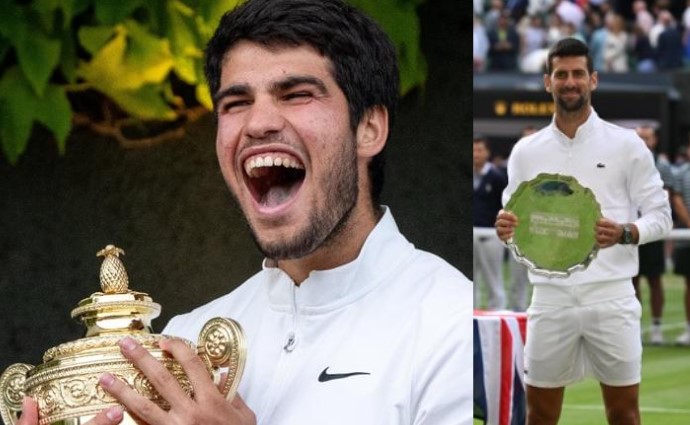The story of Mohandas Gandhi, India’s independence leader and revered icon, and Nathuram Godse, his assassin, is a tale of two vastly contrasting ideologies and legacies that have shaped modern India. Gandhi, with his philosophy of nonviolent resistance and civil disobedience, fought tirelessly for India’s independence from British rule and became a symbol of hope and peace.
On the other hand, Godse, driven by a fervent nationalism and a deep-seated hatred for Gandhi’s policies, took the life of the ‘Father of the Nation’ in a ruthless act of violence. This article delves into the lives, motivations, and legacies of these two historical figures, exploring the roots of their intense rivalry and their lasting impact on India.
Mahatma Gandhi, one of India’s most iconic and revered leaders, was assassinated on January 30, 1948 by a Hindu nationalist named Nathuram Godse. The two men, who represented opposing ideologies, remain central figures in India’s history, and their rivalry continues to influence the country’s political and cultural discourse.
Gandhi, a champion of nonviolence, was born in 1869 in Porbandar, a coastal town in present-day Gujarat. He was raised in a Hindu household and received a traditional education, but he soon became interested in Western ideas, especially the concept of civil disobedience. After studying law in Britain, Gandhi returned to India and began a lifelong campaign for independence from British rule, using nonviolent resistance as his primary tool.
Godse, on the other hand, was born in 1910 in a small village in present-day Maharashtra. He was raised in a conservative Hindu family and was taught to believe in Hindu superiority and the idea of Hindu Rashtra, or Hindu Nation. He was influenced by Hindu nationalist organizations like the Hindu Mahasabha, which sought to create a Hindu-only nation in India.
The two men first crossed paths in the late 1930s, when Gandhi was leading the Congress Party’s campaign for independence and Godse was a member of the Hindu nationalist organization, the Rashtriya Swayamsevak Sangh (RSS). Despite their differences, they both participated in the independence movement and were present at the same political events. However, their ideas about the future of India were vastly different.
Mahatma Gandhi believed in a secular, democratic India where all religions would be treated equally and where everyone would have equal rights. He advocated for nonviolence and peaceful coexistence, and was often called the “Father of the Nation.” On the other hand, Godse believed in a Hindu-only India and was frustrated with Gandhi’s policies, which he saw as appeasement of Muslims. He believed that Hindus were superior to other religions and that India should be a Hindu Rashtra.
Their rivalry came to a head on January 30, 1948, when Godse assassinated Gandhi as he was on his way to a prayer meeting in New Delhi. Godse was arrested, tried, and sentenced to death for the murder, and was hanged in 1949. Gandhi’s death shocked the nation and the world, and he was mourned by millions of people.
Martyrs Day: Gandhi – The Icon of Nonviolence and Freedom
Today, Gandhi is remembered as a symbol of peace and nonviolence, and his legacy continues to inspire people around the world. His ideas of nonviolence and civil disobedience have been adopted by many other political and social movements, including the American Civil Rights Movement. Gandhi’s life and teachings are studied in schools and universities, and his image is featured on currency and stamps in India and around the world.
Godse, on the other hand, is often remembered as a fanatic and a murderer. His ideas and actions are seen as a symbol of Hindu extremism and are rejected by most Indians. However, there are some Hindu nationalist groups in India who continue to venerate Godse and consider him a hero. They believe that he was a patriot who was committed to the cause of Hindu Rashtra and that he was unjustly punished for his beliefs.
The rivalry between Gandhi and Godse continues to shape India’s political and cultural discourse. The Indian government has banned organizations and books that promote the idea of Hindu Rashtra, and any glorification of Godse is seen as a threat to national unity. At the same time, there are ongoing debates about the role of religion in politics and the future of India as a secular, democratic nation.
Justice G D Khosla, who served on the three-judge bench at the Punjab High Court during the appeals hearing of Godse and his accomplices, noted the significance of witness Digambar Badge in the trial. According to Justice Khosla’s book, “The Murder of the Mahatma”, Badge was believed to be one of the conspirators involved in Gandhi’s assassination and actively participated in the planning of the murder. After his arrest, he admitted his guilt and agreed to incriminate his accomplices.
On February 10, 1949, the verdict was delivered, with Judge Atma Charan finding Godse, Apte, and five others guilty of the crime. Both Godse and Apte were sentenced to death, while Savarkar was acquitted. The convicted individuals were given the option to appeal the verdict, and four days later, all of them filed their appeals with the Punjab High Court, which was then known as the East Punjab High Court and located in Shimla.






